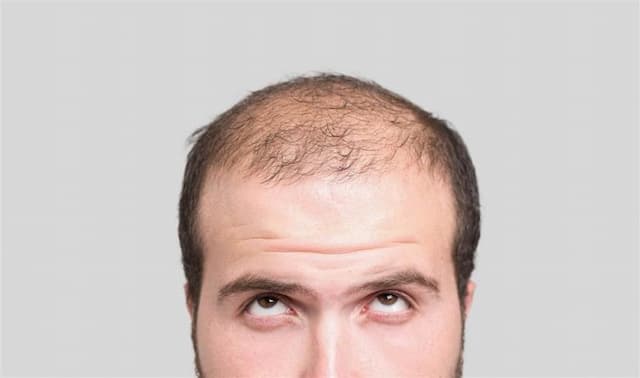Baldness in men: Causes and treatment.
Baldness is an unpleasant problem that men face more often than others. According to statistics, at least 90% of the male population suffers from increased hair loss. Let's look at the causes of baldness and talk about possible solutions to this problem and why you shouldn't hide your baldness by visiting a barbershop.
Causes of male pattern baldness

To solve the problem, you need to understand: what provoked it. There can be many reasons for the baldness that begins in a man, but most often it is one of two: either the active work of hormones or heredity. What happens in the first case? Male hormones affect the hair follicle in such a way that it gradually loses its ability to produce new hair and eventually dies. As for the second reason, we all know how much genetics affects our health and appearance. Therefore, if a man has a hereditary predisposition to hair loss, then the appearance of a bald head is almost inevitable. Especially if the hair did not grow well in the patient's mother: studies show that in 75% of cases, baldness is inherited precisely from the maternal side and only 20% from the paternal side. The remaining few percent are people in whom baldness manifests itself for the first time in the family.
Less common causes of male pattern baldness include:
- hormonal disorders;
- metabolic disorders;
- certain diseases (Addison's disease, Down's syndrome,
- systemic lupus erythematosus and others);
- stress;
- malnutrition;
- lack of vitamins.
Depending on the causes and focus of distribution, several types of baldness (or alopecia) are distinguished.
Types and stages of male pattern baldness
In 95% of balding men, this type of alopecia is recorded Androgenetic alopecia (AGA). The formation of this type of baldness is influenced by hormones and genetics. Localization of alopecia in this case falls on the parietal and frontal regions. The process of baldness begins with thinning hair, then they become short, like fluff, and after a while, they disappear completely.
There are several stages of androgenetic alopecia. According to the Norwood-Hamilton classification, which has long been used to diagnose male pattern baldness, there are seven stages of hair loss. Created in 2007, the BASP universal classification, suitable for diagnosing men and women, includes four basic and two specific types of hair loss. During the first stages, the hair begins to thin in the region of the temples and forehead, forming bald patches. In the third stage, the problem also covers the parietal region, and at the last, the main areas of hair loss merge into one.
Doctors distinguish several types of androgenetic alopecia:

- Type "Horseshoe": they talk about it if baldness begins from the frontal part closer to the temples, and then goes to the entire frontoparietal region, forming a hair loss zone that looks like a horseshoe.
- Type "Nest": baldness zones appear randomly in different areas of the head, and a nest-like area forms on the crown of the head. Ultimately, the bald area also takes on the shape of a horseshoe.
- Mixed type: hair loss occurs simultaneously on the temples and in the parietal region.
How to treat hair loss on the head?
Modern methods of treating alopecia are effective but do not always allow for complete restoration of the hairline. However, in almost every case, you can achieve some improvement and slow down the process of hair loss as much as possible.
For this, the following types of therapy can be used:
- Hormonal treatment;
- Preparations that improve the nutrition of the hair follicle;
- Anti-inflammatory therapy;
- Physiotherapy;
- Symptomatic treatment.
Effective treatment of any type of hair loss is impossible without eliminating the cause of the disease, if possible. For example, it will not be possible to eliminate genetic factors, but each person can change his diet and lifestyle, learn to control stress, etc.
During treatment, the patient must be observed by a trichologist, who monitors the dynamics of changes and, if necessary, corrects the scheme. It should be understood that the therapy of any form of alopecia requires a long time, so you should be patient and strictly follow all the recommendations of a specialist.


Post a Comment